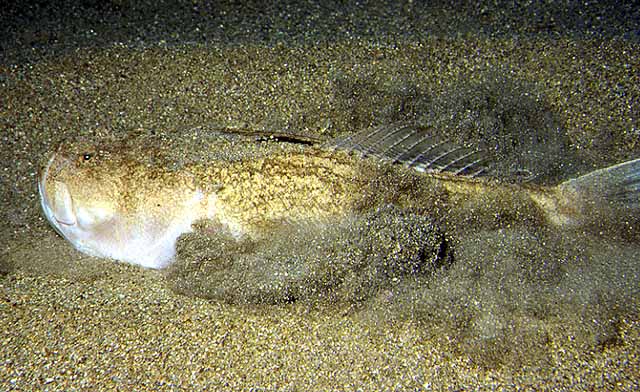| Uranoscopidae (Stargazers) |
| 56.4 cm TL (male/unsexed); max.weight: 940.0 g |
|
demersal; marine; depth range 15 - 400 m |
| Eastern Atlantic and Mediterranean Sea. |
|
|
| The shoulder spines can inflict, painful stings. Usually found buried in the sand or mud. Equipped with an acoustic apparatus that generates both acoustic and electric pulses. Electric discharge activity shows two temporal patterns: 1) reflexive discharges of short duration (milliseconds), elicited by mechanical stimulation, and 2) those of much longer duration (several seconds) observed only during the summer spawning period (Ref. 10011). Low-frequency spontaneous discharge activity (5-10 Hz), with a sexual dimorphism in discharge amplitude is also said to exist. This species suggestively represents a transitional form in the evolution of electric organs in fishes (Ref. 10577). Oviparous, eggs, larvae and juveniles are pelagic (Ref. 6763). Utilized fresh (Ref. 9987). |
|
Least Concern (LC); Date assessed: 14 July 2014 Ref. (130435)
|
| venomous |
|
Source and more info: www.fishbase.org. For personal, classroom, and other internal use only. Not for publication.

